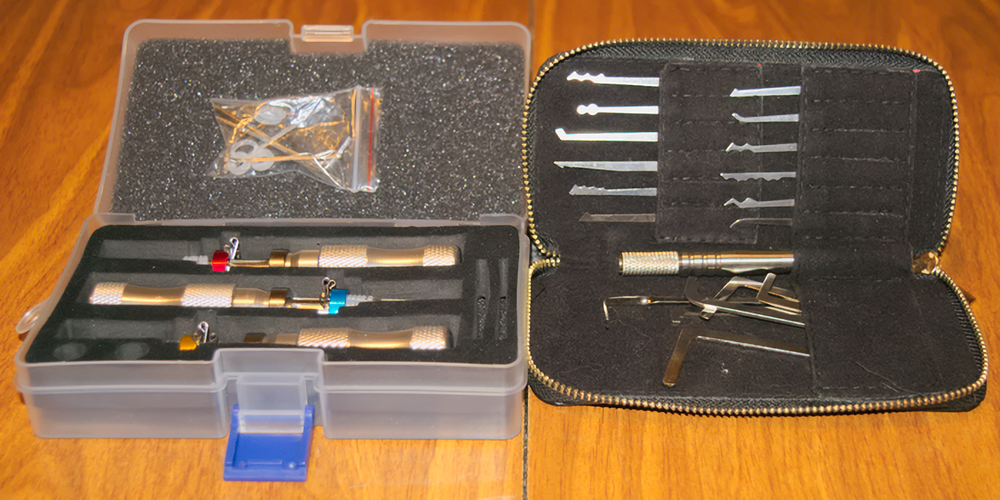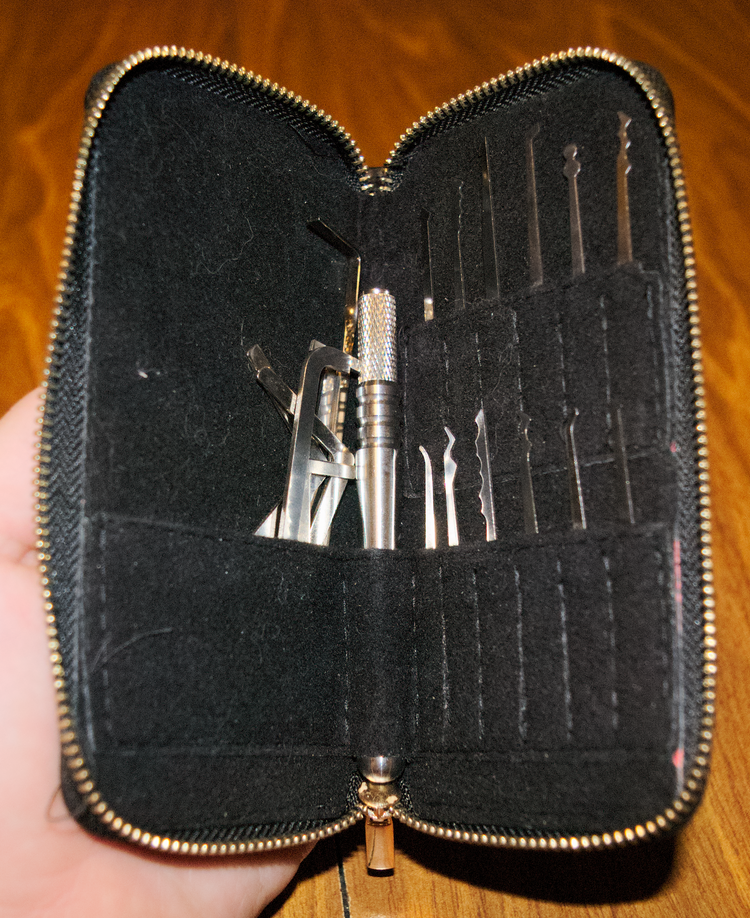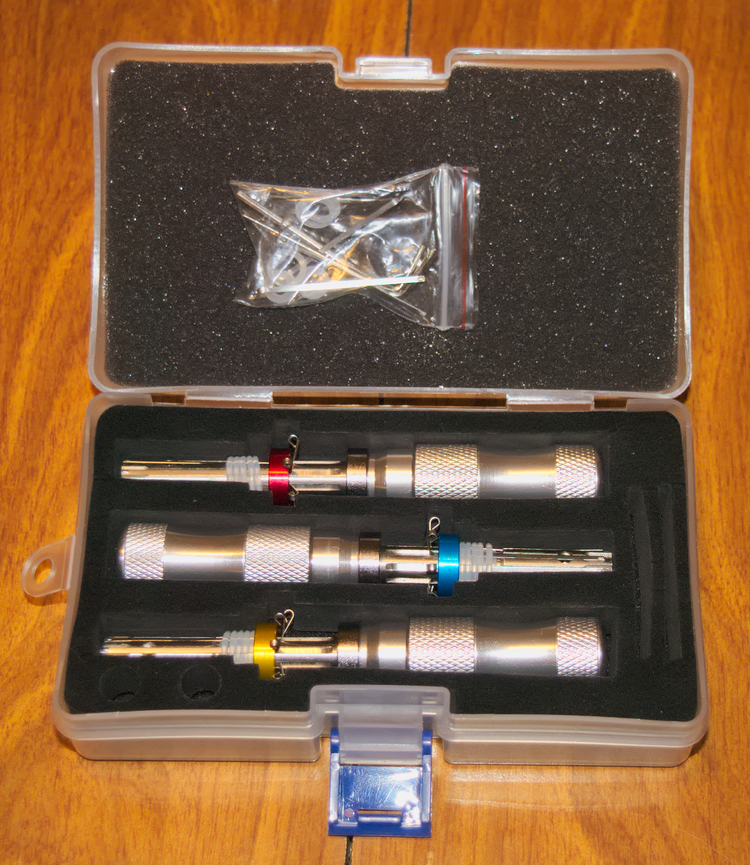The Tools That I Hopefully Won't Ever Need to Use
BIG DISCLAIMER: Study your local laws before getting into these things, you can and will be arrested if you don’t know what you are doing.
Yeah, those things. Those, my friend, are lockpicks. And this is the story of why I have them, and why I hope to never need to seriously put them to use.
Legal Notice
In the state that I live in, there are no specific laws pertaining to the possession of lockpicks specifically, though there is a rather broad and general ban on “burglary tools.” They do not require licensing in this state, and as long as I use them lawfully and with proper permissions from the owner of whatever lock I’m picking, I’m fine.
Other states may vary. Some require that you’re a certified locksmith, others outright ban them, and others consider that their use is so specific that it’s “self evident” that they’re to be used in the commission of a crime, you would only posses them in order to commit a crime, and therefore… fun times. Before playing with these things, check your laws. On that note: I’m not a lawyer, don’t take anything that I say about the law at face value, go search it yourself. I am not in any way saying what you should or should not do, I’m just talking about something that I personally own. I take no responsibility if you read this article, buy a set yourself, and then land in jail for it. I also take no responsibility if you use any of the information presented in this article (that’s also only a Google search away) to commit a crime. Understood? Okay, let’s move on.
Why
Short answer: it’s fun. Long answer: I like the challenge that is presented to me by a lock of unknown security, and the satisfaction of feeling everything slip into place.
Quick Basics
This is a set of picks:
In this case, on the right are all the picks, the left is a pocket full of tension wrenches, and the handle the picks slot into. Unlike a set of actual quality, where each one is a complete tool, this is more like that bit set for a screwdriver: one handle and a bunch of little interchangeable pieces that slide into place.
(All this information is readily searchable, so I’m not going to go into too much detail here)
The most common type of lock is called the pin and tumbler lock. A set of pins are cut in two in such a way that when the correct key is inserted, the splits in the pins line up and the cylinder that your key inserts into (called the plug) is able to rotate, actuating the actual locking mechanism. Any other key won’t cause them to line up correctly, and it won’t move.
Lockpicking is the practice of non-destructively (i.e., can still be used and isn’t damaged) opening a lock by manually manipulating the pins, taking advantage of manufacturing tolerances and the fact that no lock produced will have a perfect construction.
A device called a tension wrench is inserted into the key way and provides, well, tension, while the other hand inserts a pick and manually pushes each pin up to the correct height. Because manufacturing, usually one pin will be just a tiny fraction of a fraction closer to the side than the others, and when you push it, once it lines up, the plug will rotate just a tiny bit, causing a click. This pin is now stuck like this, meaning you can, one by one, push each one into place as they bind up, until they’re all in the correct position and the plug can turn freely.
Doing this as a hobby, we call this locksport. Doing this as a profession, well as my favorite joke goes:
"Who are you?, and how did you get in here?"
"I'm the Locksmith, and I'm the Locksmith."
What about the Other One?
Oh, this:
Those are tubular lock picks,for… tubular locks. (Again, Google is your friend). These usually have a similar design with the split pins, the only difference is the axis of movement and rotation… and so another set of cheap tools can be used to pick them, too.
Funnily enough, tubular picking is arguably easier than traditional picking:
The little pins on that device are all pushed forward, and it’s inserted into the lock. Once you’ve pushed it in all the way, just rock it back and forth. The motion will cause the spring tension to slowly push the (tool’s) pins back, and they have a few rings of friction material to keep it slow. Once they’re all pushed to the correct height, it’ll just turn.
Unlike traditional picking which requires you know the right amount of tension, where pins are, how to move one without touching the rest, what pick shape to use, what to listen for, what you want to feel, and what is a bad feel…. Here you just stick it in and jiggle it1 — job’s done.
And Why I’ll Hopefully Never Use Them
Well, obviously, everyone has hobbies, and one of mine is obviously, well, this. However, I hope that I’ll never have to seriously use them for anything else other than just hobby fun, because that means either I’m doing something illegal, or something has seriously gone wrong to the point where someone (maybe myself) needs me to bypass a lock that cannot be opened, that needs to be.
Of course, it’s nice knowing that if something happens, I do have the tools to overcome it. Little childhood me’s fears of losing the keys to his precious money box aren’t an issue anymore. This doesn’t mean that just because I have the ability, means I should use said ability.
One More Legal Note
A quick one this time:
If you are going to attempt to pick something like someone’s front door, jewelry box, or what have you (house locks are the important ones here), without the express consent of the owner of the property, that’s illegal. If you do have their consent, either keep them on hand to supervise, or keep it in writing (or, both) so if the cops show up, you can prove yourself. Knowing the USA, I’d say keep them in easy reach, physically. Either right next to you, or on the other side of a wall or door you can be heard through / knock on to get them to appear if you encounter law enforcement. “Yeah I actually do have approval, can I call them real quick and prove it,” while 100% valid, is not 100% guaranteed that they’ll let you do it.
By the way: this is how red teams (physical security testers) can do what they do: they have a scope of work document (called the Rules of Engagement, or, more formally, the “Letter of Authorization”) with them, so if something happens they can present that and prove that this is what they’re supposed to be doing.
-
( ͡° ͜ʖ ͡°) ↩︎



